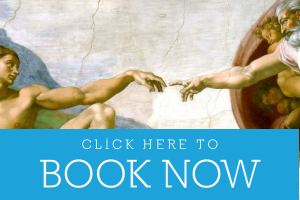informations vatican museums history
Inside the Vatican Museums are on display all the works of art and archaeological findings accumulated over the centuries by Popes. A huge collection, among the largest in the world, scattered in galleries, halls, chapels, churches and museums in the Vatican City. History Founded by Pope Julius II in 1506 and opened to the public since 1771, in the Vatican Museums you can admire a good part of the works of art collected by the popes over the centuries. Their origin is traced to the purchase of one marble sculpture which took place over 500 years ago. It is the Laocoon group showing the well-known character from Greek mythology, and his sons wrapped by a snake. The statue was found in a vineyard not far from the Basilica of Santa Maria Maggiore in Rome, curious, Michelangelo and Pope Julius II sent Giuliano da Sangallo to examine the work and they advised him to buy it right away. A month later the sculpture was displayed to the public for the first time. Over the years, every Pope has added to the collection many paintings, frescoed halls, archaeological finds, sculptures and today the Vatican Museums are about 7km of rooms and corridors. A treaty of 1929 states that the Holy See can adjust schedules and entrance days but must allow the visit to all tourists and scholars who wish without removing any works from museums. A special case was that of Hitler's visit to Rome in 1938, on that occasion the Pope, Pius XI, he moved to Castel Gandolfo to meet him and did not close the museum to avoid a visit to the Fuhrer. In 2006 the museum celebrated their 500th anniversary!
Discover Rome Art!
Find on the map!
Colosseum
Colosseum
RomeSistine Chapel
Sistine Chapel
RomeVatican Museums
Vatican Museums
RomeSan Pietro
San Pietro
RomeCastel Sant'Angelo
National Roman Museum
Barberini Palace
Barberini Palace
RomeCirco Massimo
Circo Massimo
RomePiazza Navona
Piazza Navona
RomeMontecitorio
Montecitorio
RomeAra Pacis
Ara Pacis
RomeDomus Aurea
Domus Aurea
RomeAltare della Patria
What our visitors saying about their experience
-
BEAUTIFUL!!!
Sara
You are amazing -- such wonderful and speedy response and service.
Many thanks!. -
Thank you Florence.net for your excellent and speedy service. It is very much appreciated..
Barry Cashin -
Firstly, I want to say that we were very happy with both of the tours we made with you. We really enjoyed touring the Uffizi with Jerry who is a great guide, he really helped us to learn about the chronology and history behind the masterful works, to understand and appreciate well. Thank again. With appreciation and best wishes,.
Daniel Goldberg -
Super! Thank you for your work!
Yana -
Many thanks for your help and for being so quick, as well. You are wonderful!
Lynne Taylor -
Thank you very much for spoiling our visit to Firenze. And may I commend you on your wonderful customer service skill
Alan



